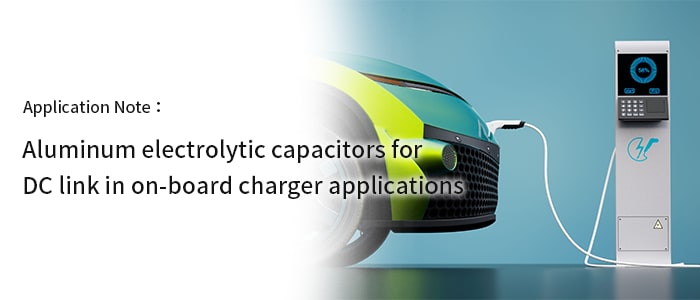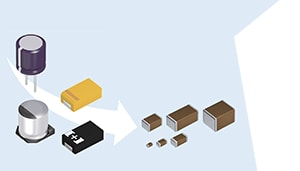|
 |
|
The demand for on-board chargers (OBCs) is increasing due to the growing market for electrified vehicles (EVs). The function of the OBC is to convert the AC voltage from an external source to a specific DC voltage that is based on the requirements of the battery management system. By this, a battery-saving and fast charging process can be reached.
Due to the complexity of such systems, the OBC needs a certain bulk capacitance to stabilize the DC voltage that is charging the battery. Aluminum electrolytic capacitors are an ideal solution due to their high voltage ratings, large capacitance, and high ripple current capabilities in a wide temperature range. |
|
 |
|
|
 |
|
Solution Guide: Replacing Electrolytic Capacitor with MLCC, Revised Guide |
The use of MLCCs is increasing in power circuits and other applications, replacing traditional aluminum electrolytic and tantalum electrolytic capacitors due to their smaller size, low ESR, and improved reliability.
However, MLCCs may lead to abnormal oscillation or anti-resonance, and high dielectric constant MLCCs may exhibit a capacitance change when DC voltage is applied.
We will explain the benefits and precautions for replacing electrolytic capacitors with MLCCs. |
|
 |
|
|
 |
|
Temperature sensing of LED Flash with NTC thermistor |
The NTC thermistor can be used as a temperature sensor and thermal protection device.
Mounting it in close proximity to the heat source can accurately sense the temperature, but in some cases, it may need to be mounted away from the heat source due to size constraints.
In this article, considering such conditions, we used the LEDs on the LED flash circuit board as the heat source and simulated heat generation to check the temperature difference between the LEDs and the NTC thermistors caused by the different mounting positions. We also checked the effect of circuit board thickness. |
 |
|
Roof Antenna |
| This is an introduction of the most suitable products related to "Roof Antenna" in automobile safety mechanisms, from the TDK Group's product lines. |
|